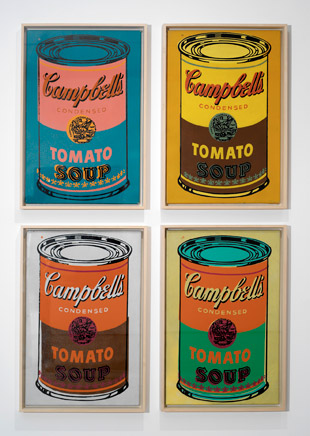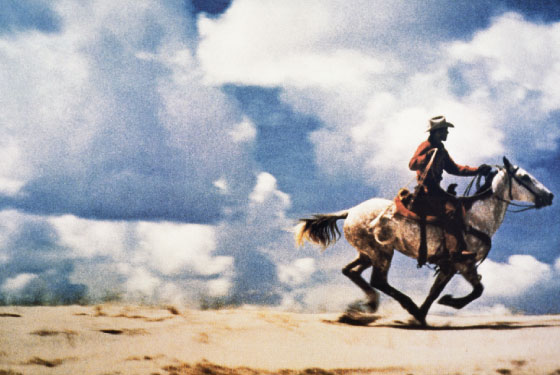
Warhol - "Marilyn Monroe"
Many artists – especially in the second half of the twentieth century – have made their livings by essentially reclaiming the artwork of their predecessors. Re-contextualization is often seen as the element necessary to transform something from plagiarism to original artwork. Parodies are a favorite of modern popular culture, often drawing plots, characters, and visual styles from copyrighted works. Despite their imitative appearance, they are appreciated for their humor and alternative perspective on the subject being parodied, and are generally covered under the U.S.

Warhol - "Four Colored Campbell's Soup Can"
What his critics failed to recognize was that Warhol’s apparently unoriginal art commented on the nature of both originality and art. His repetition, often in grids but sometimes in stacks or piles (when three-dimensional objects were involved) moved his repurposed imagery towards the abstract, transforming it into construction material for a new visual product. Using unusual color schemes helped him accomplish this goal of “abstracting” familiar shapes. His use of both repetition and color is exemplified by his Marilyn Monroe prints; though he did not take the original photograph used to create his silkscreen designs, he uses it as a tool to create something uniquely his. Similar effects can be seen in his oddly-tinted

Warhol - "Brillo Boxes"
Warhol’s recreation of product packages further blurred the line between consumeristic and artistic forms of production. Using wooden boxes and silkscreen printing, Warhol meticulously created replicas of packages that could have been found in any store. With the Brillo boxes, Warhol again produced an alternate version of an existing design, but unlike the aforementioned prints, the intrigue of this project lay in the utter lack of visual difference between it and the original. It was largely seen as a commentary on the nature of art. “Brillo Box, to me,” said one art historian, “demonstrated that the difference between art and non-art is philosophical.” Here was a design that one would hardly glance at on a shelf in a supermarket, but when made by a known fine artist (as opposed to a basically anonymous product designer) and placed into a gallery setting, it was suddenly elevated to “art”. Without the use of an existing product design, the installation’s meaning would have had much less impact. Most modern art historians would likely agree that, though the images used were not Warhol’s initially, he earned ownership of them thanks to his unique application, fresh perspective, and additional commentary on the source.
Marlboro cigarette advertisement
Photography is another medium that can be used as a tool for appropriation. When the photograph was invented in 1839 by Louis-Jacques-Mandé Daguerre, it was primarily used as a straightforward and scientific method of recording images, but in time grew into a respected form of artistic expression

Prince - "Untitled (Cowboy)"
Now consider Richard Prince, a well-known and highly regarded photographer. One of his photos set an auction record in 2005, selling for $1.2 million. The director of the

Krantz - "Stretchin' Out"
Prince - "Untitled (Cowboy)"
Though his work is often crafted to send a message about its artistic source, Prince has been criticized for his appropriation more than Warhol was. Several photographers have taken legal action against him, though he has thus far been protected by fair use laws. Jim Krantz, one of the photographers on the Marlboro campaign, has not taken legal action, but he has been angered when people praise – and pay millions to own – Prince’s photos without realizing that Krantz created the original. Prince himself does not seem terribly concerned with the situation. “I never associated advertisements with having an author,” he said in an interview. This situation is in somewhat of an ethical gray area. Though Prince appears less respectful of the artists who created the original works he uses, if the art community accepts Warhol’s appropriation, it would be somewhat hypocritical to condemn Prince entirely.



Wow, the writing is impeccable! I learned a thing or two; it was definitely worth the read! Great job Patrick! With love, and, as always, yours truly, -Anonymous
ReplyDelete